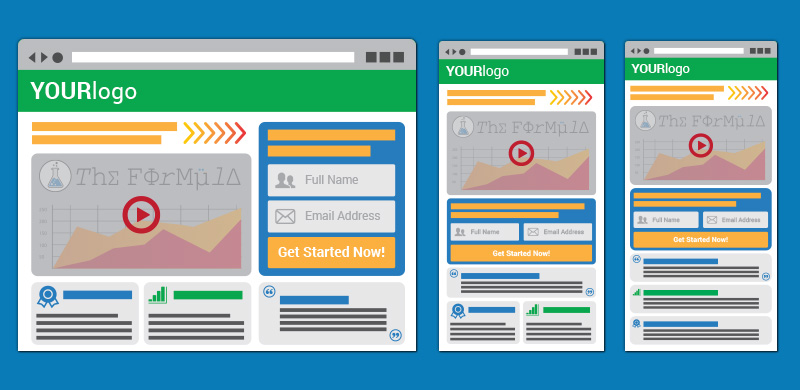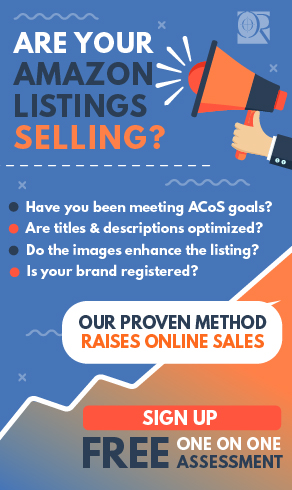
Well Built Landing Pages Will Lead to Increased Leads and Conversions
Conventional wisdom and tried-and-true practices have had marketers designing landing pages as follows:
Create a landing page that’s independent of your core website, in order to entice users to fill out a lead form. These landing pages, in turn, are often times not indexed by search engines, and are typically designed to provide readers with few options aside from filling out a form (in other words, there’s no menu options, sidebar, footer, etc.).
But this may not be the best approach to generating leads. Many marketing gurus think that this “all or nothing” approach alienates a good portion of the population by not allowing them to learn more about your product or service before being forced to commit.
They may be onto something.
Giving Users Flexibility With Your Landing Pages
One of the most common landing page strategies employed today is the use of gated content, wherein you provide a good piece of content (white paper, video, free trial) after a user subscribes to your mailing list.
This strategy, (you’ll hear it often called a squeeze page) all but forces users to make one decision: sign up. But is this approach truly effective?
Google Analytics, of course, offers insight on the effectiveness of your landing pages. But, if your squeeze pages perform like the industry average, then chances are your pages have a very high bounce rate (like more than 80%), meaning folks are landing on your page, and decide to leave before taking any action.
That’s not the action you want to have happen. So how then can you improve your landing page performance?
Well, you might already have some pretty powerful landing pages on your website now, without even realizing it. Most websites offer high-quality content on pages that focus on answering specific questions that customers might have.
Let’s say a person is looking to buy a camera and isn’t sure why they might need your model. But they do know that they plan on using their camera outdoors a lot, so they google: “can I use XYZ camera outdoors.”
You’ve already created a targeted web page that focuses on this niche, so it appears high on the search results page. The content of this page, from words to design, are focused on providing answers to the outdoor enthusiast. That page, as a result, likely performs really well when you look at it in Google Analytics, because it’s offering something of worth to the reader, without forcing that reader to provide information to get that information.
Why not, then, employ this “high-quality content” strategy with your landing pages, rather than a “you must make a conversion now” approach?
We’re not saying you should double-dip, and use your existing web pages as official landing pages. What we’re saying is you should consider approaching your landing pages the way you approach your core website pages: provide your users with more than just a “sign up to get the goods” strategy.
The Use Of Destination URLs
No matter what type of landing page strategy you plan to employ, you must be certain that you provide your readers with the information they’re looking for. If you fail to provide content that answers their question, you’ll get a bounce.
So we encourage you to employ a “destination URL” strategy for your landing pages built on your website. This can be particularly helpful when you target keywords in a paid search campaign. You’ll be able to send folks to a page that answers their specific questions and this is intended to coincide with your campaign.
By looking over Google Analytics, you can get a good idea of areas of your website that are gaining high traffic. You can also get a good idea of the types of terms your target audience is searching for, based on what stage they’re in of the purchase cycle.
Use this information to begin to craft on-site landing pages that don’t squeeze folks into signing up, but rather provide them with information specific to their needs.
The camera company we eluded to earlier might have landing pages that answer the following questions (depending on what they assess as topics their audience wants to know about):
- Can your camera shoot high-quality video?
- What’s the difference between your newer model and your older model?
- Is this a good option for someone who wants to take pictures on the water?
Each of these landing pages will have their own, keyword-specific URL structure, thus will not only serve as a “landing page” in the formal sense but will also help you to rank higher for long-tail keywords.
In other words, it’s a win-win situation.
Learn More About Approaching Landing Pages From A New Perspective
There is no one-size-fits-all approach to a landing page strategy, but if we know one thing, it’s that changing it up from time to time can help you better assess your game plan. If you’re less than thrilled with your squeeze page strategy (as most folks are) consider looking at your landing pages in a whole new light.
OperationROI can help. We’ll assess your current strategy and implement an action plan that helps you see a far more impressive ROI for each of your newly designed landing pages. Learn more about how we can help you generate leads in a whole new way by calling us at 1-888-277-5429 or by filling out our contact form.
To learn more about OperationROI, find us on DesignRush.
Learn How We Help Clients Convert!





